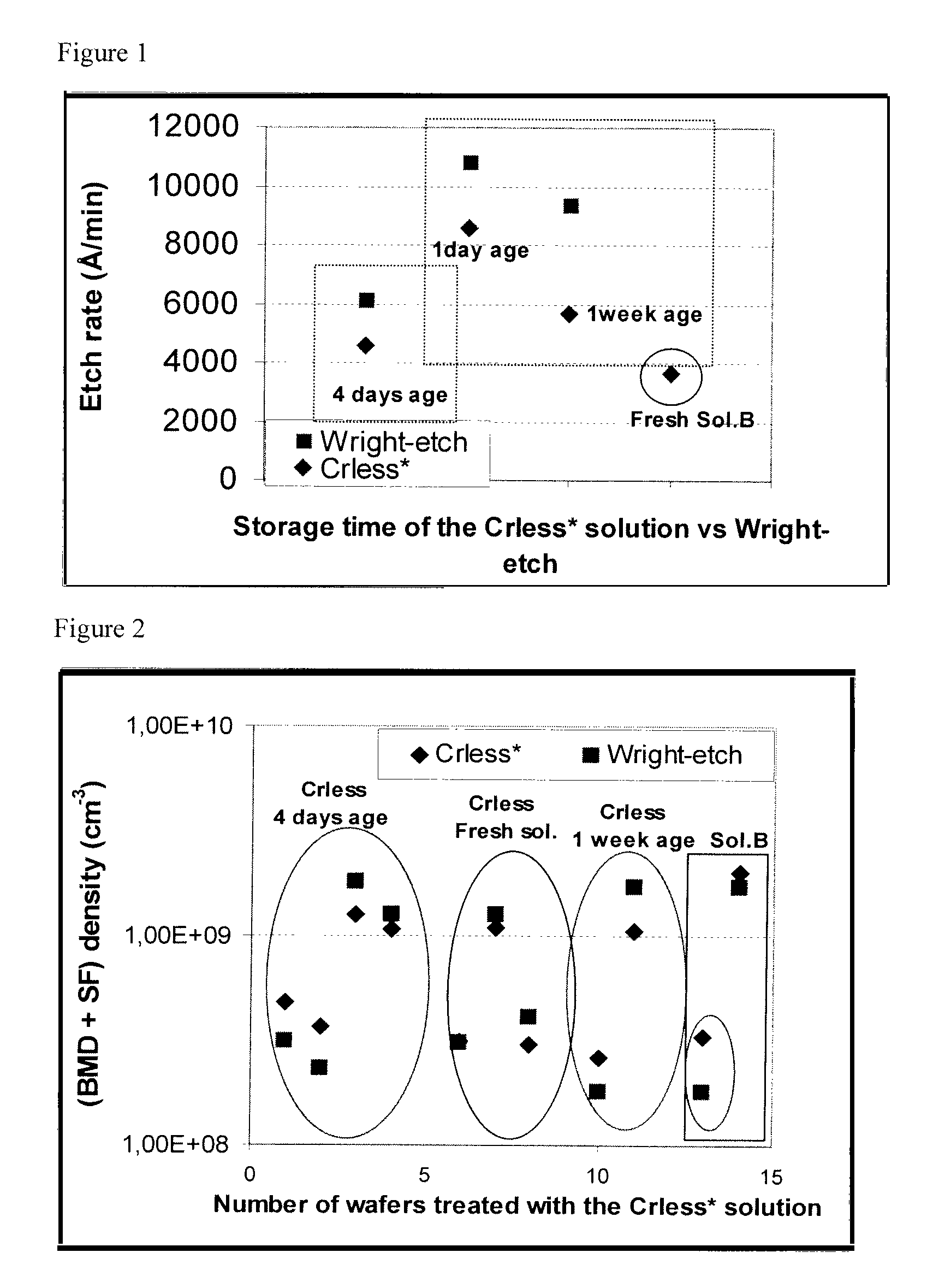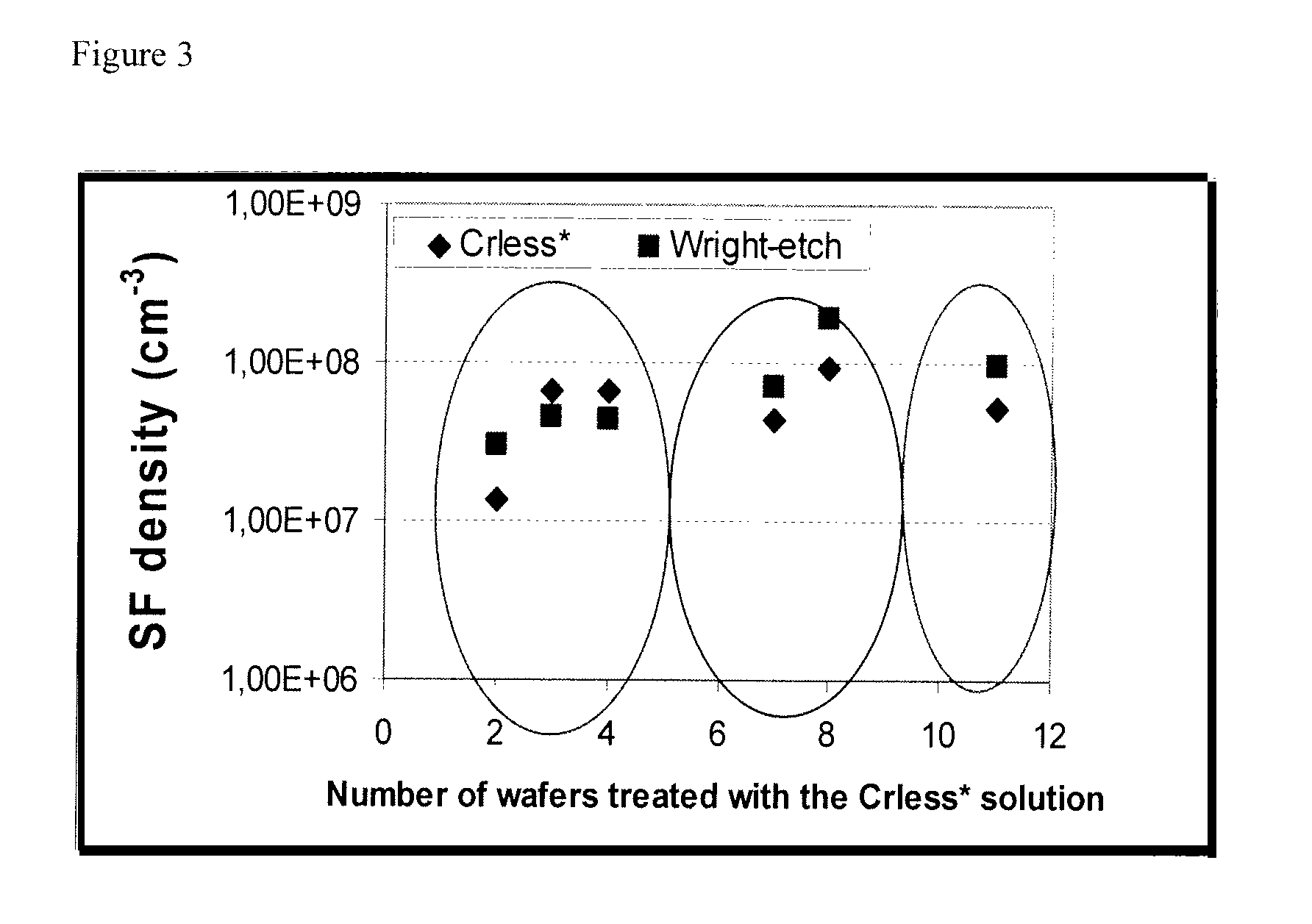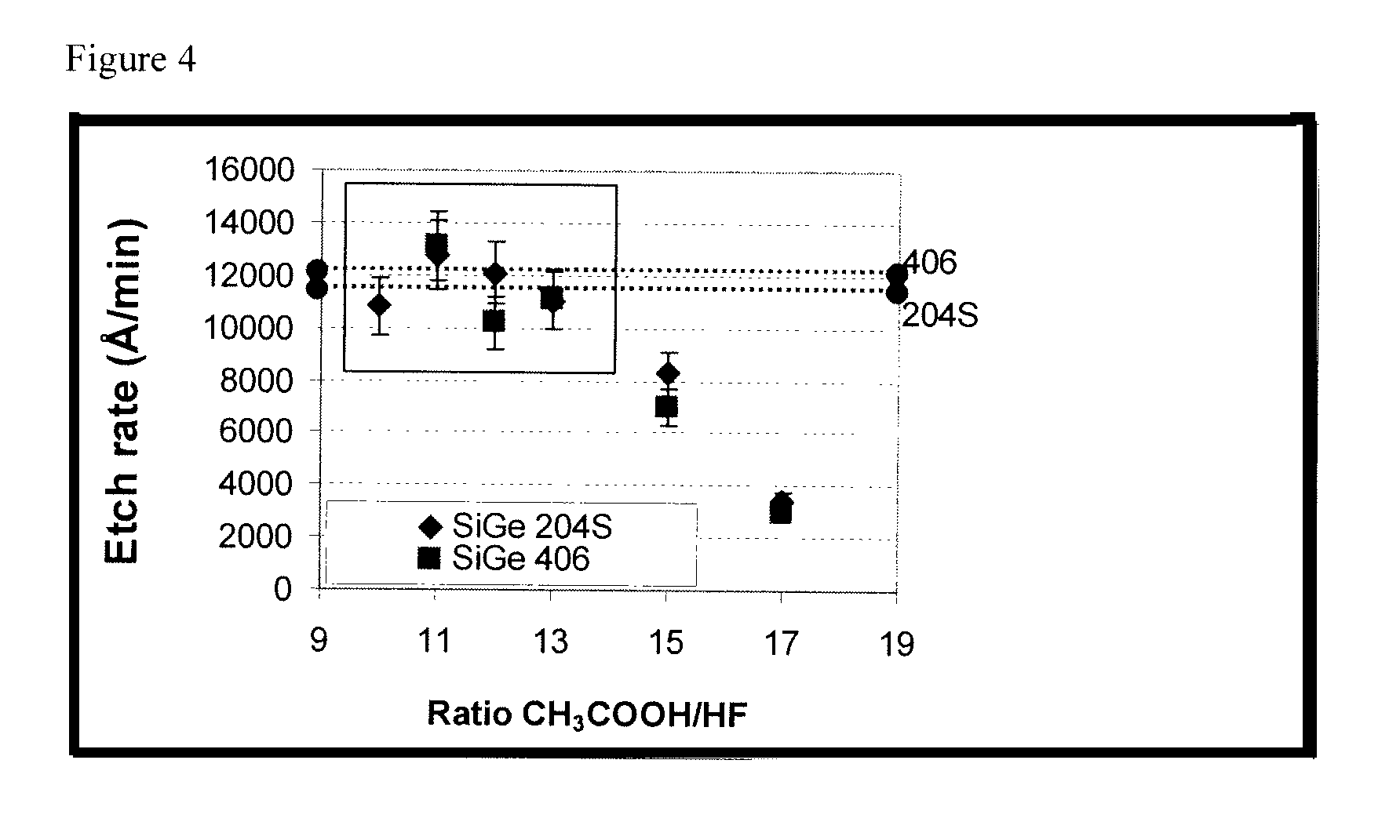Chromium-free etching solution for si-substrates and uses therefor
a technology of chromium-free etching and si-substrates, which is applied in the direction of inorganic non-surface active detergent compositions, cleaning using liquids, instruments, etc., can solve the problems of high toxic dichromates, high etch rate, and negative impact on the functionality and reliability of integrated circuits, etc., to achieve high etching rate and high satisfactory etch results
- Summary
- Abstract
- Description
- Claims
- Application Information
AI Technical Summary
Benefits of technology
Problems solved by technology
Method used
Image
Examples
Embodiment Construction
[0025]The present invention will be first described in connection with the etching solution. The preferred embodiments discussed here below, however, also apply with respect to the methods and processes of the present invention, unless otherwise stated.
[0026]The present invention is mainly characterized in that a novel etching solution for treating semiconductor surfaces is provided. The term “semiconductor surfaces” as employed in accordance with the present invention aims at defining any type of semiconductor surfaces, including substrates such as SOI and sSOI, as well as substrates such as silicon germanium substrates. The etching solution in accordance with the present invention is chromium-free and comprises hydrofluoric acid, nitric acid and acetic acid. Preferably, the etching solution in accordance with the present invention consists of hydrofluoric acid, nitric acid and acetic acid and preferably the components identified above are present in the form as further detailed be...
PUM
| Property | Measurement | Unit |
|---|---|---|
| volume ratio | aaaaa | aaaaa |
| concentration | aaaaa | aaaaa |
| volume ratio | aaaaa | aaaaa |
Abstract
Description
Claims
Application Information
 Login to View More
Login to View More - R&D
- Intellectual Property
- Life Sciences
- Materials
- Tech Scout
- Unparalleled Data Quality
- Higher Quality Content
- 60% Fewer Hallucinations
Browse by: Latest US Patents, China's latest patents, Technical Efficacy Thesaurus, Application Domain, Technology Topic, Popular Technical Reports.
© 2025 PatSnap. All rights reserved.Legal|Privacy policy|Modern Slavery Act Transparency Statement|Sitemap|About US| Contact US: help@patsnap.com



